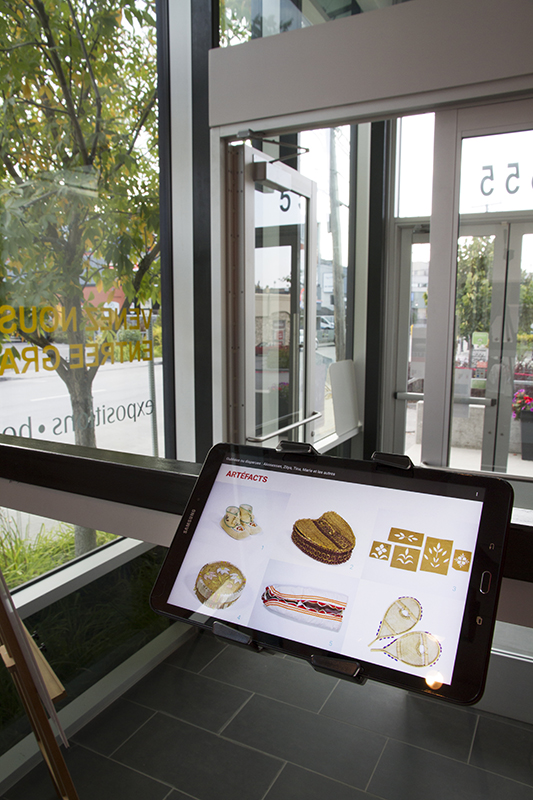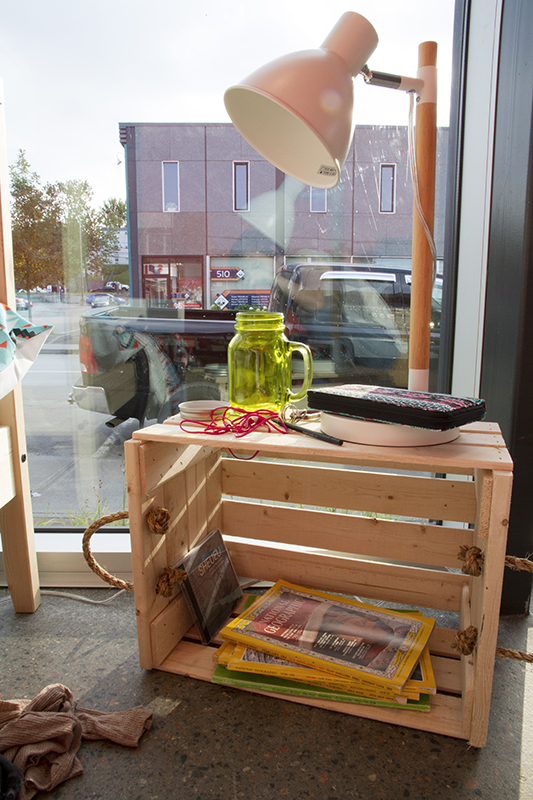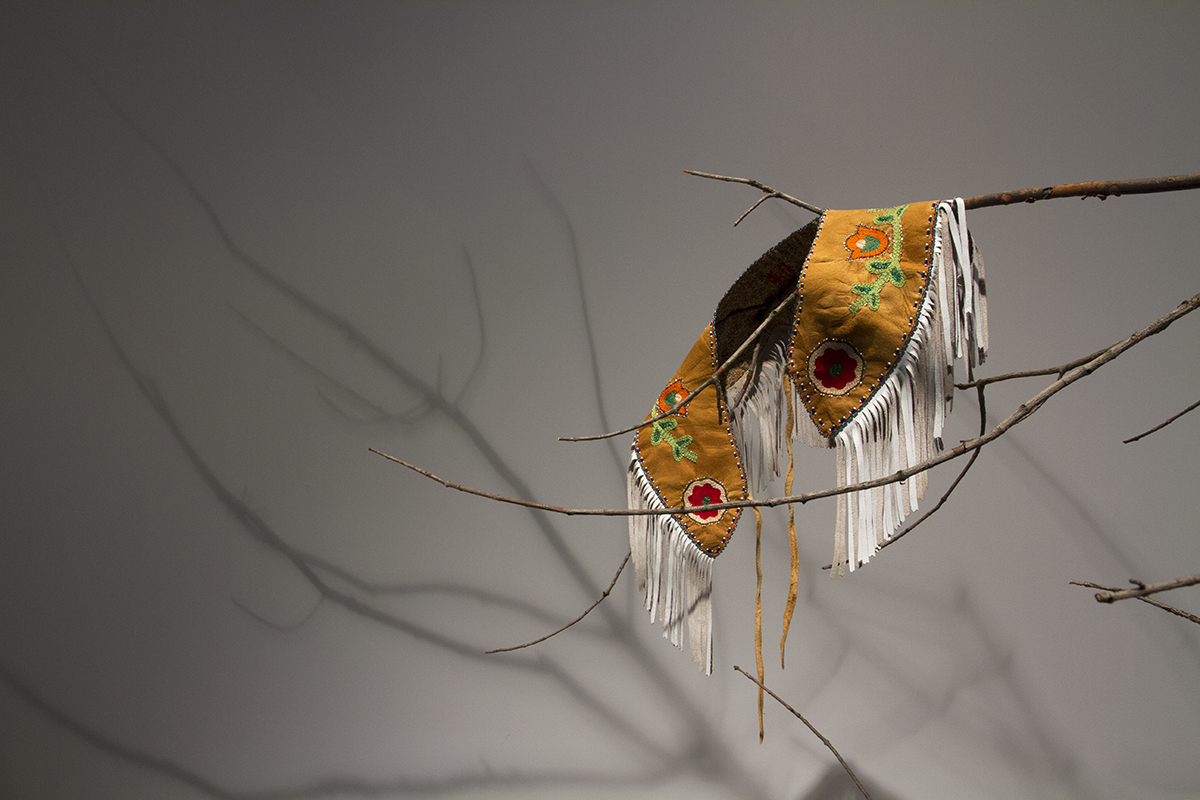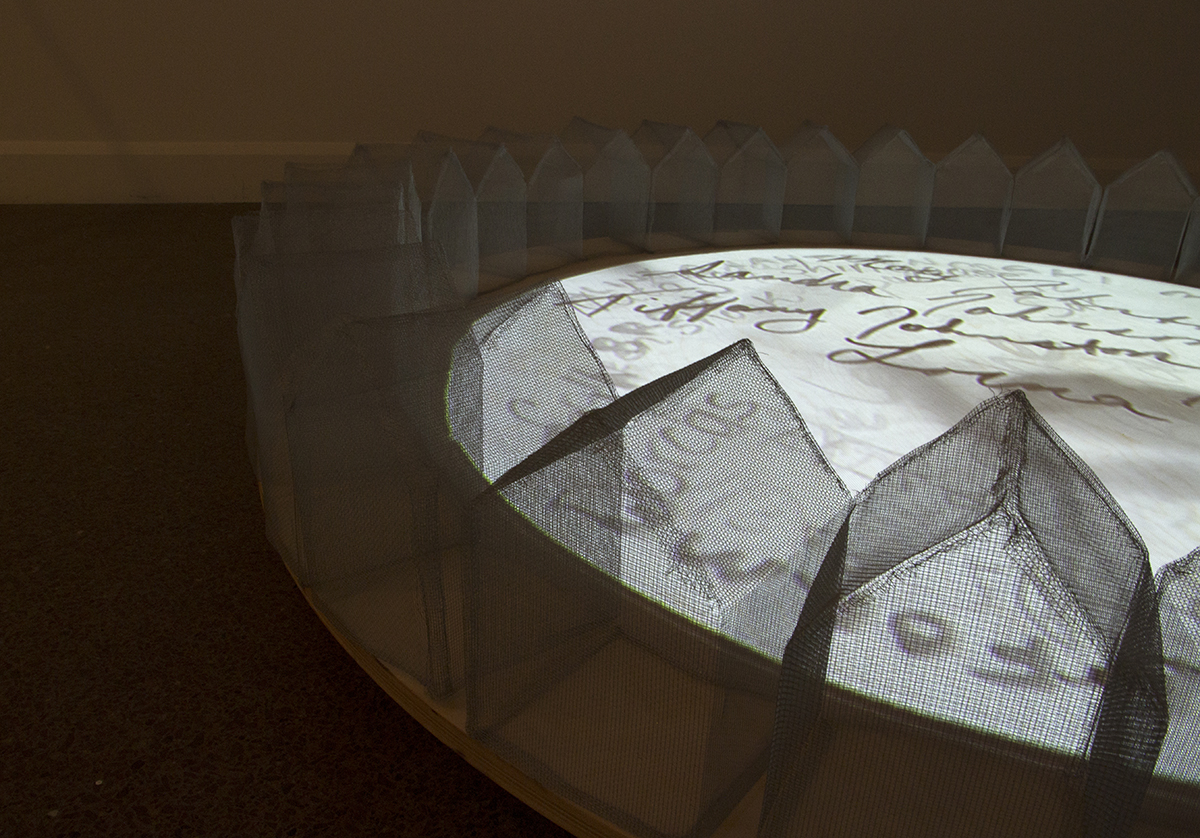Collective Exhibition
MISSING OR FORGOTTEN
Akonessen, Zitya, Tina, Marie and the others
Message from the Curator When I began my research for this exhibition, I noticed how often generic terms attempt to fill the void left by history. An infinite string of titles such as: Indian Woman, Portrait of an Indian Woman, Young Indian Girl… appear on the information sheets. As a result of not having known more about these women, these blank spaces wonderfully play their part, which is to constrain to a state of non-existence the monumental contribution of native women in the history of the Americas. Let us remember that they are still here, they never ceased to exist.
Centre d’art actuel Langage Plus, 2017
Missing or Forgotten :
Akonessen, Zitya, Tina, Marie and the others
A text by Marie-Andrée Gill
The image of the native woman invented during colonization has clung to the collective mind as all clichés born of ignorance do. Free women, loving women, enveloping millennia of culture in their warmth & care, all the while being perceived as simply docile and without faith or morals; they have been disembodied. This objectified image has persisted through time and has come to an inevitable mutation: frailty. Of this historical construct, what remains is what we see today: disaster; in the collectivity as well as in the family unit. Mothers, friends, sisters, Akonessen, Zitya, Tina, Marie… disappeared or forgotten. The weight of the word “forgotten” is universally and tremendously heavy. To be born a native woman in Canada is uncontrollable yet all this violence accompanies the simple fact of having been born here. The knowledge and know-how of women is a tradition, which is interwoven with gentleness as well as strength; a mixture of beauty and solace. Where many have left a void, others are still here to rekindle hope, to create a remembrance too long to cast aside. They are essential, they hold on and resist in all their infinite patience; they are the pillars of succeeding generations in a world fast attaining its own limitations. They are strong and they succeed in giving us space to breathe during this transition between turmoil and resolution.
Women are the foundation of all life and each one deserves respect in equal fashion. And now, women are breaking… they are disappearing. Men fall. A blurry circle has been created. Women as well as men bring, along with their knowledge and perseverance, equilibrium in any sane culture. Something is happening. A wind is rising and within its breeze, a sense of recuperating what was once lost. How do we transcend the state of “forgotten”? Art and its multiple messages always bring us back to our red-hot organs, to the truth of our own welded flesh. With the twin miracles of gentleness and empathy as weapons, we will cast ourselves forth in this excessively lengthy history of dehumanization, which must be brought back to the fundamentals of our consciousness. These women are all the women of the world. Let us embrace their history. Let us embrace OUR history.
Artists and works
Disappeared and forgetten :
Akonessen, Zitya, Tina, Marie and the others

ANONYMOUS ARTIST
Urban Shaman Contemporary Aboriginal Art
Anonymous artist
Institutionalized Disappearance
2015
Latex inkjet prints on canvas, wood and metal
Municipal art collection, City of Montreal

SYLVIE BERNARD
Wôlinak, Abenaki Nation
Biography
Born of an Abenaki father and of a Quebecois mother, Sylvie Bernard first came into the spotlight in Quebec as a singer-songwriter. Also a craftswoman, she is a consultant and a specialist in the arts of beadwork and embroidery.
Les noms-dits
60 portable sculptures dedicated to 60 nameless women
Marie Sauvagesse, on June 11, 1724, has been buried in the site’s cemetery with the common ceremonies. She died yesterday, at the age of twenty-five years old, wife of Jean-Baptiste Sauvage, from the village of Bécancour; were present at her burial Louis her father, Joseph, Michel, all savages.
When reading the recent burial records Actes de sépulture Les Abénakis de Wôlinak (1719–1899), we find that the only trace of existence of men, women, and children from my community is often just a first name written by a priest. In the cemetery of the village of Bécancour, where they are buried, no trace, no memorial. About three hundred years later, how can we change the course of history? « Heiress of their know-how, I wondered how to remember them in a joyful way. »?
That’s how the project Les noms-dits. started. From all those beings registered in the burial records, I chose to “weave the oblivion” of 60 nameless women buried on my community’s land. « For each of them, I will create a portable sculpture as a symbol of the continuation of the soul; a precious object that women wear in order to show their own identity. ».
This creative project in visual arts allows me to reconnect with a forgotten chapter of the history of the Wôlinak’s Abenakis. It is a conversation with the memory and monuments in tribute to all my nameless ascendants.
Sylvie Bernard,
Heiress of ancestral know-how.
Urban Shaman Contemporary Aboriginal Art
Sylvie Bernard
Clothing – Portable Sculpture
2015
Squirrel and mink hide, goat wool and linen fiber
182 x 121 cm
Justine Bourdages, La Boîte Rouge VIF
Sylvie Bernard
Cross – Portable sculpture
2015
Wood, feather stems and fiberglass
304,80 x 213 x 10,16 cm

LISE BIBEAU
Odanak, Abenaki Nation
Biography
Lise is a multidisciplinary craftswoman. Her interests lie in working with birch bark and in Abenaki basketry, which she combines with furniture conceptualization and diversified design elements.

ANNETTE NOLETT
Odanak, Abenaki Nation
Biography
Annette Nolett is an expert craftswoman in the art of Abenaki basketry. She creates original artworks that favor the transmission of her traditional knowledge & expertise to the youth of her community. She also teaches the basics of her technique in the form of workshops of her own design.
Justine Bourdages, La Boîte Rouge VIF
Lise Bibeau and Annette Nolett (Odanak, Abenaki Nation)
Waniljh8jik Phanemok
2015
Black ash, cotton rope, sweetgrass and cedar
30 x 60 x 38,1 cm

DIANE BLACKSMITH
Mashteuiatsh, Ilnue Nation
Biography
Diane Blacksmith has been professionally practicing traditional arts & crafts since the age of 12. Leather, caribou hair, birch bark and porcupine quills are but a few of the materials she employs.
Urban Shaman Contemporary Aboriginal Art
Diane Blacksmith
Shawl of a Kukum
2015
Moose hide, beaded pearls with cotton string, birch

HANNAH CLAUS
Baie de Quinte, Kanien’kehá:ka/Mohawk Nation
Biography
Hannah Claus is a multidisciplinary artist of Kanien’kehá:ka/Mohawk descent who specializes in art installations and video artistry. She teaches contemporary native art at the Kiuna Institute in Odanak, Quebec, the only native postsecondary establishment in Quebec.
1-2. Urban Shaman Contemporary Aboriginal Art
3. Justine Bourdages, La Boîte Rouge VIF
Hannah Claus
For Those Who Didn’t Make It Home
2015
Aluminum tulle, video installation and wood
11 cm x 152,4 cm

Oeuvre collective
(Sylvie Paré, Diane Blacksmith, Lise Bibeau, Jocelyne Fortin,
Milène Essertaize, Mélissa Corbeil, Claudia Néron,
Justine Bourdages et Camille Perry)
1-3. Urban Shaman Contemporary Aboriginal Art
4-6. Justine Bourdages, La Boîte Rouge VIF
Collective work of art
(Sylvie Paré, Diane Blacksmith, Lise Bibeau, Jocelyne Fortin, Milène Essertaize, Mélissa Corbeil, Claudia Néron, Justine Bourdages et Camille Perry)
Room of a missing young woman
2017
Diverse objects
This room belongs to all young aboriginal girls. As well as the objects they cherish, which embody their life at odds between two cultures. For their loved ones, it is tragic to suddenly find themselves with an abandoned room in their homes while they hope and pray for their safe return.

AKIENDA LAINÉ
Wendake, Huron-Wendat Nation
Biography
Born of an Innu mother and of a Huron-Wendat father, Akienda Lainé is a multidisciplinary artist focusing mainly in film & television and music. His passion for his own culture as well as native culture at large has led him to perform in many countries around the world in parallel to his career in film & television.
Akienda Lainé
Missing Women, 2017
A “La Boite Rouge VIF” production
9 min 36 sec film

MARIETTE MANIGOUCHE
Mashteuiatsh, Ilnue Nation
Biography
An Ilnue craftswoman, Mariette Manigouche possesses a unique mastery of the traditional expertise of her nation, notably in the fabrication of traditional tents, embroidery, sewing, braiding and the processes of hide tanning. She revels in surmounting technical challenges in her creation process.
1-2. Urban Shaman Contemporary Aboriginal Art
3. Justine Bourdages, La Boîte Rouge VIF
Mariette Manigouche
Small Bundle and Mittens
2015
Moose hide, beaded pearls, rabbit fur and boiled wool,
and latex inkjet reproduction of a William Armstrong piece
(Portrait of an Indian Woman, oil painting on cardboard, Acc. #15185, National Gallery of Canada Collection)
1861
30 x 24,9 cm
43 x 51 x 43 cm

NADIA MYRE
Kitigan Zibi, Anishinabe Nation
Biography
Nadia Myre is a multidisciplinary Anishnabe artist. The themes she mainly explores are identity, desire and memory. She uses collaborative processes as strategies of creation to guide her work.
Urban Shaman Contemporary Aboriginal Art
Nadia Myre
Untitled / Anonymous
2015
Video
8 min 5 sec video
Municipal art collection, City of Montreal

SYLVIE PARÉ,
curator
Wendake, Huron-Wendat Nation
Biography
Born of a Huron-Wendat mother, Sylvie Paré is a visual artist and museologist. Among others themes, she is interested in the duty of remembrance in her own artistic endeavors. She is an acting commissioner within the framework of this very project.

DIANE ROBERTSON
Mashteuiatsh, Ilnue Nation
Biography
Diane Robertson (1960-1993) was a prominent figure in contemporary native art. She was renowned through her drawings as well as for her art installations & performances. She suddenly left this mortal plane in the middle of a flourishing career. She was an intricate part of many artistic events in Quebec as well as abroad.
Urban Shaman Contemporary Aboriginal Art



































